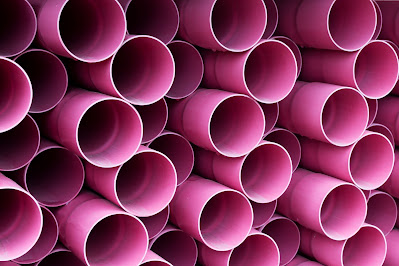The Design Criteria were last updated in 2022. While the Department generally performs updates every 4-5 years, the department decided that a limited update was needed in 2024 because the Environmental Protection Agency (EPA) set maximum contaminant levels (MCLs) for five per and polyfluoroalkyl substances (PFAS) in April 2024.
This update incorporated PFAS treatment criteria into Chapter 4 - Treatment, and added PFAS to the source water testing requirements in Chapter 1.2.3 Water Quality Data. The Department also used the update project as an opportunity to address internal and external feedback on Chapter 7 - Storage Tanks, and Appendix A, and align these sections more accurately with our existing business processes. Editorial changes were made throughout these sections to correct errors and inconsistencies and clarify language.
Like in previous updates, the department convened groups of stakeholders to work on the criteria. There were two external workgroups and one internal workgroup: Storage Tanks, PFAS Treatment, and Appendix A (design review submittal requirements). Generally, the overall structure of this document remained the same between 2013, 2017, 2022, and 2024 including section headings and names. The following describes the updates to each section that came out of the workgroups:
- PFAS Treatment: The PFAS treatment workgroup incorporated treatment requirements for PFAS removal to align with EPA’s PFAS MCL. This update primarily focused on 4.10 Adsorptive Media. The updates to this section include minimum empty bed contact times and maximum flow rates for granular activated carbon, non regenerating ion exchange, and engineered resin media. Additional design submittal requirements were added for media selection justification, design capacity, operations and control strategy. Language was also added outlining when piloting is and is not required for adsorptive media treatment systems. The workgroup took into consideration the impacts that the updated requirements would have on small public water systems.
- Storage Tanks: The storage tank workgroup focused on updating Chapter 7. The workgroup added language in 7.0.10 Roof and Sidewall that no longer allows corrugated roofs on storage tanks and clarified the requirements for storage tank interior construction materials due to difficulty protecting these types of roofs from contamination. The workgroup also further clarified requirements for vents, overflows, drains, and access openings after gathering internal and external feedback since the last update.
- Appendix A: The internal Department workgroup updated Appendix A which covers the design review submittal requirements. This workgroup aligned Appendix A with the current Department business practices. Appendix A, Table A.1 was updated and now outlines if a waterworks project needs: Department design review, monitoring plan updates, professional engineer for community water systems, and the corrosion category. The workgroup's effort resulted in changes to the Design Criteria and not just Appendix A.
- The Introduction and Chapter 1 were updated to reflect the changes to Appendix A including the removal of the limited scope process.
- Chapter 4, Section 4.4.2 was updated related to 4-log virus inactivation capacity for triggered groundwater systems. Section 4.4.2 was updated to align with the Regulation 11 requirement for groundwater systems to maintain 0.2 mg/L at the entry point instead of requiring the capacity for 4-log virus inactivation. The Department still strongly recommends 4-log virus inactivation for triggered groundwater systems but the Department does not have staff resources to devote to this requirement given the limited amount of Fecal Indicator-Positive monitoring events in Colorado. The Department also has a strong and long-standing approach to evaluating water sources for being under the direct influence of surface water, so we do not view this change as jeopardizing public health protection.

.jpg)
.jpg)
.png)






.jpg)





